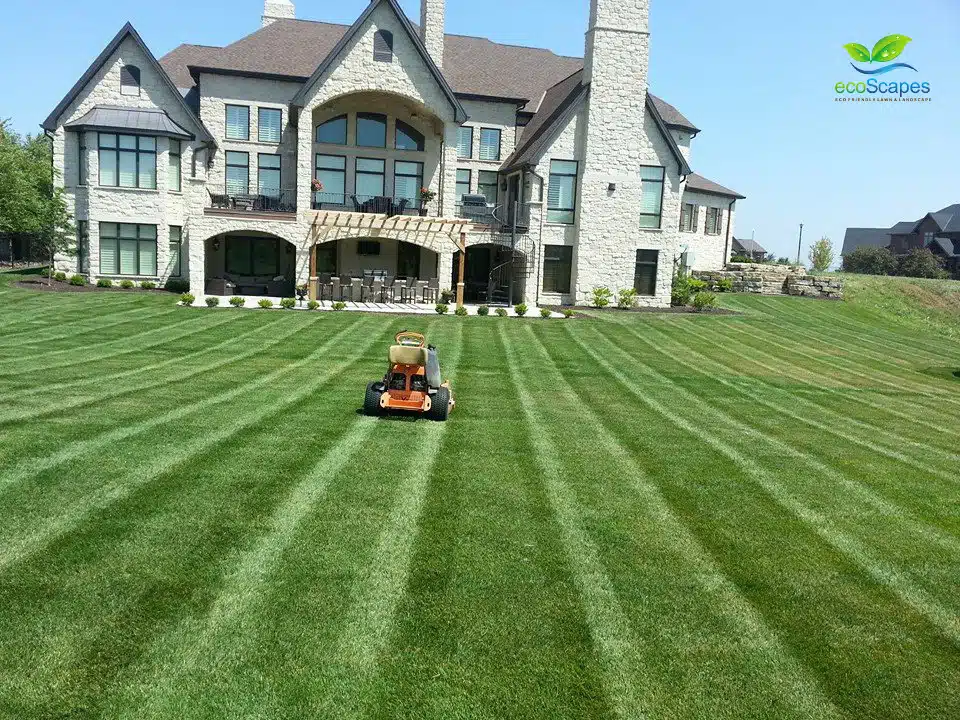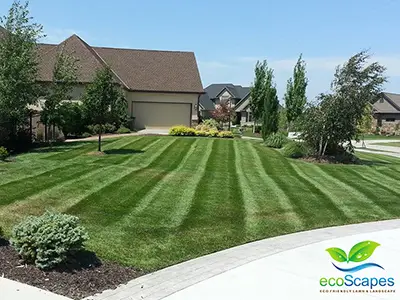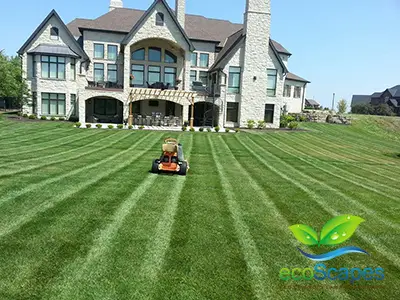The 5 Most Important Basics Of Lawn Mowing
Keeping your lawn looking lush and healthy is no easy task. How you mow, when you mow, and what mower you use all play a role in keeping your yard looking its best.
Want to be on the cutting edge of mowing your lawn properly? Follow these simple tips to get it right.
Mowing At the Proper Height
Mowing at the proper height is an important factor in maintaining a healthy and attractive lawn. An ideal mowing height should be between 3 to 3.5 inches, depending on the type of grass. Mowing lower than this can cause scalping, which weakens the root system leading to sparse patches in that area. Mowing too low also increases the chances of weeds spreading as they can better compete with shorter blades of grass. Therefore, when cutting your lawn make sure you set the blade high enough so that only one-third of the grass blade’s length is removed.
It is best to mulch the grass as bagging the clippings deprives the soil of additional nitrogen and nutrients available from the clippings. This is a natural fertilizer and an eco-friendly way of maintaining your lawn.
With these tips in mind, keeping your lawn at an appropriate height as well as regularly mulching clippings will ensure a strong and healthy turf year-round. Moving onto another key element for successful mowing…
Consistently Change Mowing Direction
Changing mowing direction is an important aspect of mowing. It helps prevent soil compaction, encourages grass to grow in the right way, and prevents it from growing in a single direction.
Specifically, there are four key points to consider when changing mowing directions:
- Mow side-to-side or diagonally for the first cut each season.
- Change your cutting pattern with every other mow throughout the season.
- Avoid making more than three passes over any area of turfgrass during one mowing session.
It is also recommended to begin by using a mulching blade as it will help retain moisture and keep clippings on top of the surface where they can decompose quickly into natural fertilizer for your turfgrass or garden beds. This reduces waste cleanup after mowing and provides additional nourishment for plants without having to purchase expensive fertilizers at a local gardening store.
Mowing On A Consistent Basis
Mowing on a consistent basis is an important step to keeping your property looking neat and tidy, as well as providing health benefits for the grass.
The frequency of mowing depends largely on the type of grass you have growing in your yard – some species require more frequent trimming than others.
However, regardless of the type of grass, it is important to maintain a regular mowing schedule throughout the year that works with both your lifestyle and the needs of your lawn.
Additionally, when mowing, it’s beneficial to adjust blade height settings based on seasonal changes or predicted weather patterns.
Raising blades during periods of drought can help prevent excessive stress on plants due to heat and lack of moisture while lowering them during cooler months may encourage new growth.
Keeping Mower Blades Sharp
Sharp lawn mower blades are essential for a clean cut of grass. This prevents fraying and promotes the growth of healthy, lush turfgrass. To keep your blades sharp, sharpen them once each season or every 10-15 hours of mowing time with a file or grinding wheel.
It is also important to check the blade balance and tension while sharpening; if they are not properly balanced, they can vibrate excessively which could damage both the machine and the lawn. Additionally, it is best to lubricate the blade shaft before reinstalling to prevent rusting and deterioration of the blades over time.
Furthermore, when replacing an existing blade, make sure that you buy one that fits correctly onto your model lawnmower. Using an incorrect size may result in poor cutting performance due to improper contact between the ground and the blade edge as well as excessive vibration from misalignment with respect to its mounting points.
Taking these steps will ensure that your lawnmower remains safe and efficient all season long.
Using The Appropriate Size Mower for Your Lawn
A correctly sized mower will not only give better results, but it can help to reduce the risk of injury or fatigue while mowing.
It is important to select the right mower based on the size of your yard and terrain features like slopes, hills, and obstacles such as trees or garden beds.
The type of grass in your yard should also be considered when selecting a mower; some types of grass require higher-powered motors than others.
If you have a large area with thick grass, a riding lawnmower may be appropriate whereas smaller areas may need to use a walk-behind push-style mower.
Ultimately, choosing the wrong size mower could lead to poor performance and increase wear on the machine which would cause more frequent maintenance needs and costs.
Knowing how much power you need from your mower along with its ability to navigate different terrain types helps ensure that it will provide sufficient cutting capability without straining itself too much.
Additionally, having an appropriately sized machine makes it easier to maneuver around obstacles and gives improved control during operation making it safer for both you and any bystanders who might be nearby.
Conclusion
Mowing a lawn is an essential skill for anyone looking to keep their yard in good condition.
While there are many elements that go into proper mowing, understanding the five most important basics can be a great start.
From knowing when to sharpen blades, finding the ideal height of cut, and changing up the cutting direction periodically; to selecting the correct type of mower and adhering to regular maintenance schedules – these five tips will ensure any homeowner can have a lawn they’ll be proud of!
After all, what better way to show off your green thumb than with a perfectly manicured lawn?
So don’t let your grass grow wild – get out there and give it some precision cuts!












